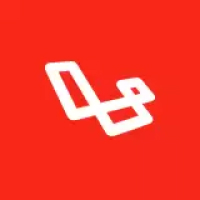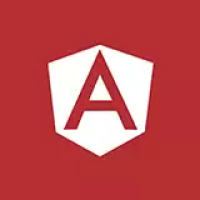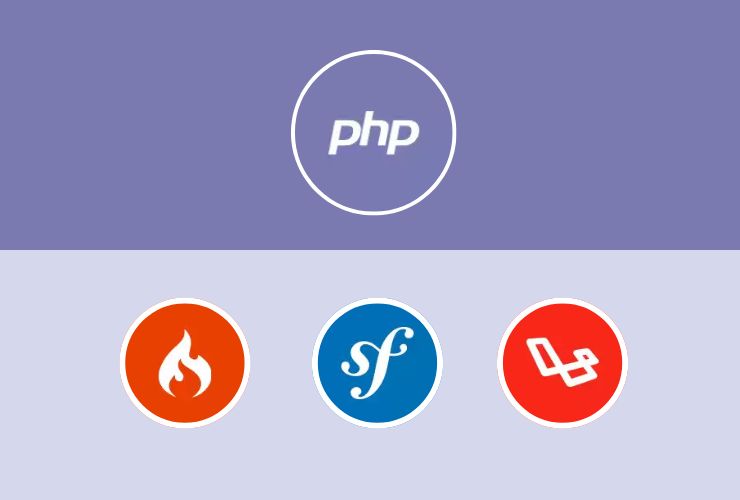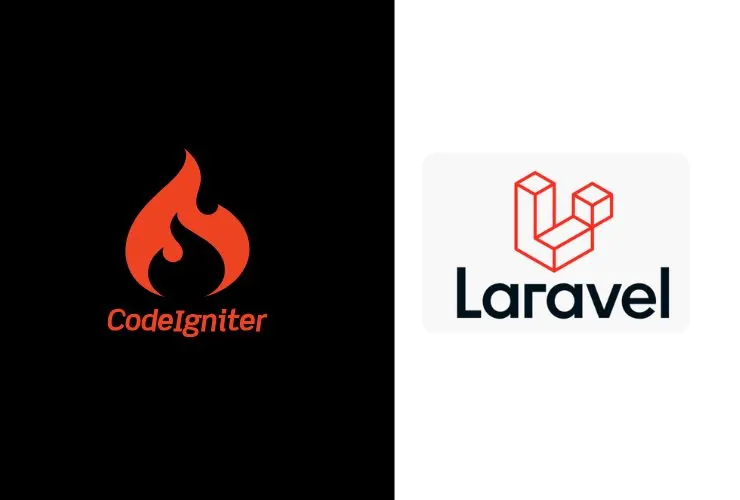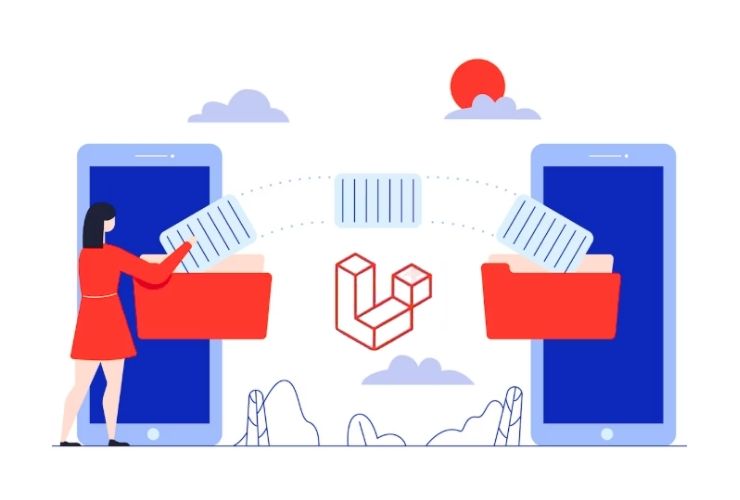Laravel, a widely adopted PHP framework, has earned its reputation for simplifying web development. With its elegant syntax, built-in features, and a rich ecosystem, Laravel accelerates the process of building robust and scalable web applications. Whether you’re working on a small project or a large enterprise solution, Laravel enhances productivity and efficiency. Below, we’ll dive deeper into how Laravel achieves this:
1. MVC Architecture for Clear Code Structure
Laravel is based on the Model-View-Controller (MVC) pattern, which is very helpful in simplifying the structure and organization of web applications.
- Model: Handles data and business logic.
- View: Manages the user interface (UI) and presentation.
- Controller: Acts as a mediator between the model and view, receiving input from users and returning the appropriate output.
This separation of concerns is crystal clear, hence the code will be more modular, easier to maintain, and scalable. Laravel breaks up complex application logic into more manageable components so that developers can work on individual elements without interfering with others.
2. Built-in Authentication and Authorization
Laravel already provides authentication and authorization. And this includes ready-made solutions for the following items:
- User Registration: Ready-made setup for user registration forms and user data handling.
- Login system: Fast integration of all log-in functionalities.
- Password Reset: Out-of-the-box functionality to implement password reset capability.
- Role-based Access Control Ability to manage user roles and limit the access of certain portions of an application.
These tools, therefore, give developers leverage to focus on developing unique features of the application instead of wasting time coding their basic security functions.
3. Eloquent ORM for Database Management
ORM is one of the most standout features that support high-speed development; Laravel’s Eloquent ORM allows developers to diminish database interactions by using PHP syntax instead of SQL. Using Eloquent, you can interact with databases through PHP models.
Easy definition of model relationships (one-to-many, many-to-many, etc.).
It will enable using simple methods for running database queries, reducing the usage of complex SQL statements.
Eloquent allows data in applications to be managed easily and quickly without writing long, complicated SQL queries.
4. Blade Templating Engine
Laravel provides the Blade templating engine, which makes it easy for developers to write dynamic content with a minimum of PHP code.
- Blade is: Simple and elegant. It allows easy PHP integration into HTML, thus making templates simple to handle.
- Reusable: Blade views can be extended, reused, and even shared across different applications.
- Flexible: Blade comes with conditional statements, loops, and even custom directives to have better control over HTML rendering.
This Blade engine enables web developers to make dynamic websites that will have cleaner and more maintainable code, speeding up the process of front-end development.
5. Artisan Command-Line Tool
One of the most powerful features of Laravel is the Artisan Command-Line Interface (CLI). Artisan automates many tasks that would otherwise take up significant development time. Some key Artisan features include:
- Code Generation: Artisan can generate controllers, models, migrations, and more with a single command, saving hours of manual coding.
- Database Migrations: Artisan makes running and rolling back database migrations simple and efficient.
- Task Scheduling: Developers can automate recurring tasks like sending emails, clearing caches, or generating reports.
This command-line tool ensures developers can quickly scaffold their applications, execute repetitive tasks, and focus on writing the core logic of the application.
6. Laravel Packages and Ecosystem
Laravel’s packages are numerous, and developers will find it very easy to extend their applications with them. These packages tend to solve most common tasks among them:
- Payment Gateways: Laravel Cashier.
- Authentication: Laravel Passport solves API authentication in a secure and easy manner.
- Email and Notification Systems (Laravel Mail and Notification)
- Image Processing (Intervention Image)
- Caching (Laravel Cache)
By using these packages, developers can quickly add complex features to their applications without reinventing the wheel, speeding up the development process.
7. Routing and Middleware Simplified
Laravel routing system is powerful and flexible so that developers can:
- Define simple and complex routes.
- Use different HTTP methods (GET, POST, PUT, DELETE).
- Group routes and apply filters using middleware for things like authentication, logging, and request validation.
Middleware makes adding additional logic to request handling seamless, ensuring that developers don’t need to write repetitive code, further improving efficiency.
8. Laravel Forge and Envoyer for Deployment
Laravel Forge and Envoyer make deployment and server management very easy.
- Laravel Forge automatically provisions and manages web servers through setting up Nginx and SSL certificates to database servers.
- Envoyer ensures zero downtime deployments, and thus easy-to-push updates to production without disrupting user experiences.
These tools allow developers to focus on building features rather than worrying about deployment and server setup.
9. Security Features
Laravel is developed with safety in mind. It provides developers with a set of tools that help them handle common security problems, such as:
- CSRF Protection
- Password Hashing
- Encryption
These built-in security features allow developers to focus on building the app rather than manually coding complex security solutions.
10. Comprehensive Testing Support
Developers can easily write and run unit tests, automate tests to catch bugs early, and maintain stability by using testing environments to simulate user actions and database changes.
Testing early in the development process helps the developers deliver more stable, better-quality applications faster and with fewer bugs making it to production.
11. Database Migrations for Smooth Changes
Laravel’s database migration system allows developers to modify the schema of the database in a structured, version-controlled way. This feature makes it easier to collaborate and makes sure that database changes can safely be applied across different environments. Migrations:
- Allow for easy creation and modification of database tables.
- Keep track of changes made to the database schema.
- Ensure smooth transitions between different versions of the database.
This eliminates errors that can arise from manual database modifications, reducing downtime and ensuring that database changes are consistent.
Conclusion
Laravel is an incredibly strong framework that really streamlines the process of web development and brings it up to much higher speeds while being much easier and having fewer error opportunities. All these qualities enable Laravel to facilitate developers with creating high-quality web applications efficiently. So, whatever is your scale-whether small or very big, the workflow can easily be done with this Laravel to focus more on building innovative, scalable, easy-to-maintain, and high-performance apps.


